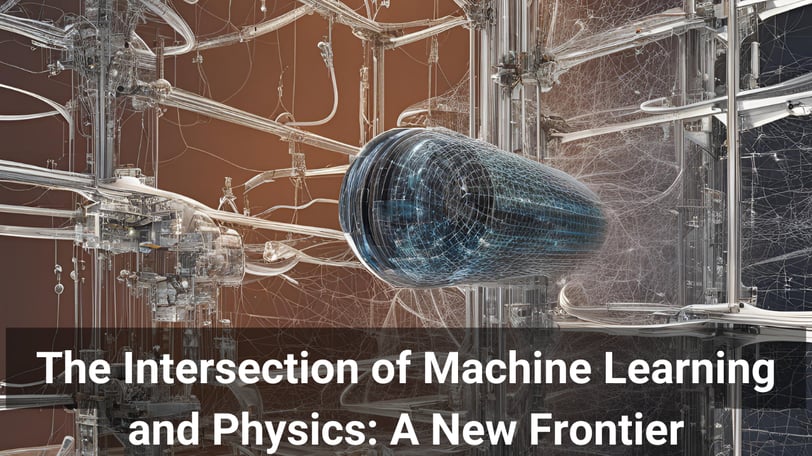The Intersection of Machine Learning and Physics: A New Frontier


Emergence of machine learning in various sciences and technologies has brought about a paradigm shift; physics is one such area. This is becoming a research area in which ML might unfold complicated physical phenomena at extra-ordinary speeds, or rather accelerated scientific discovery.
Machine learning is actually an application of artificial intelligence wherein algorithms, statistical models are applied in computers to enable them to perform tasks without explicit instructions that are based on patterns and inference. ML may be applied in physics to analyze big data sets, recognize patterns, and make predictions, which often cannot be feasibly carried out using conventional computational methods.
One of the most impressive applications of ML in physics perhaps can be cited through particle physics. The LHC at CERN generates data of petabytes that literally cannot be read by hand, so they filter the signals through noise - namely, the unwanted noise relevant events - since the algorithm could, in fact, find new particles or throw better light on how forces are being used at the very basic level.
The ML techniques are applied in the study of cosmology to interpret cosmic microwave background radiation in an effort to understand what the early universe looked like. Similarly, in astrophysics, ML is used to identify galaxies and classify all celestial objects on the basis of data taken by telescopes.
Another area where ML has made good inroads is quantum physics. Quantum many-body problems are very difficult to solve and are predicted by the properties of systems with large numbers of interacting particles. This has been proven to be solved using ML algorithms, specifically neural networks, which approximate wave functions for these systems, leading to new insights into quantum behavior.
For condensed matter physics, this ML revolutionarized the field as a whole. It will provide the ability of predicting properties on the material given its possible usages. Indeed, it truly helps invent a better semiconductor or superconductor, among a host of many other important material inventions needed in technological advancement.
This is known as physics-informed machine learning; and this is another very exciting development where the laws of physics guide the process of learning, therefore making the results more accurate and generalizable. In fact, some of its applications involve solving differential equations, design optimization in engineering, and also climate modeling.
This is much potential but also source of problems because combining ML with physics will give some problems to address. Among those, an important one is that the developed models should be interpretable. Physics is related to understanding principles that govern nature. ML models have, for ages been considered a black box, but now there exists an active area of research whose aim is more interpretable ML models that shall give explanations about the uncovered principles of physics. Another challenge involved in the process is the vast requirement of good-quality data sets to be used for the training of the ML models, and data tends to be in short supply or noisy.
Machine learning has all of that potential to form the future landscape of physics. Extremely powerful machinery that it brings toward analyzing data and recognition of patterns to be used toward unprecedented breakthroughs in our universe's understanding. As the field matures, it should look forward to ever more sophisticated models of MLs that are at once powerful as well as interpretative, shedding deeper insights about the physical world.
For those interested in a deeper dive, a comprehensive review of machine learning in physics would be an excellent starting point that summarizes the key concepts and applications across various subfields of physics. The future of physics intertwined with machine learning is bright and full of promise.
